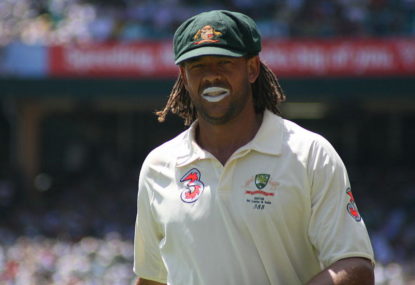After a sensational finish to the season by the Australian cricket team and the raging success of the BBL, Cricket Australia can be pleased with the health of the game in the country.
Their work in raising the profile of the women’s game is to be commended.
However, as Shane Warne says, the game is missing the personalities of its past.
When one looks at the core of the Australian team, which includes Steve Smith, David Warner, Josh Hazlewood and Mitch Starc, as skilled as they are, their personalities and their ability to engage with the public lags far behind the Australian team that played from the mid-1990s to 2000s.
Perhaps it’s just nostalgia from my childhood days, but names like Steve Waugh, Adam Gilchrist, and Glenn McGrath, carry far more weight as cricketers.
Some might conclude that the pure dominance of the team a decade ago was why the Australian public seemed to shower its cricketers with more love compared to now. However, it was as recent as 2015, when the Australian one-day team blitzed its way to a dominant World Cup win and the nation was hardly ecstatic.
Some also blame stronger media restrictions, which prevent players from expressing their views. Though this is a fair point, it isn’t sophisticated enough.
The players of yesteryear seemed to have much more rounded personalities we could relate to.
Matthew Hayden was vocal about his childhood in the bush, his cooking and surfing skills. Brett Lee crafted an image of a chilled out musician, and a fashion icon to contrast his often fiery on-field demeanour. Steve Waugh’s tremendous work improving the lives of impoverished girls in Kolkata endeared him to many Indians and Australians around the globe.
While Shane Warne’s soap opera life was a special case in building up his legendary status, Andrew Symonds came across as a maverick, who seemed to live by a kind of ‘work hard, party hard’ mantra, attracting many fans like myself to his dynamic playing style.

It’s not necessarily their personal lives (except for Warne) that we had an insight into, but we very much felt like we knew these individuals beyond their cricket, and this seemed to increase our admiration for them.
They were professionals playing with an amateur spirit.
Now there seems to be a corporate culture that defines these cricketers, and while they come across as friendly to young fans, the adult fans are finding it harder to relate to them.
Steve Smith and Mitchell Starc are very good cricketers, who come across as very decent and polite people, but we can’t exactly say they are vibrant personalities.
Nathan Lyon did get a huge fan following, after constant “Nice Garry!” assurances from Matthew Wade. Yet, he developed more of a cult hero status, which quickly died down the same way facebook memes about him stopped circulating.
The words that Cricket Australia instructs the players to throw around at press conferences such as “leadership group”, “sleeping patterns”, and “workloads”, are becoming a real chore. The players do play aggressively and are currently successful, making it interesting to watch, but it’s the personalities that make one emotionally invested in the team’s performance.
It’s hard to say that now. The series against Pakistan this summer really struggled for my attention.
I remember tearing up when Australia lost the 2005 Ashes. Yet the 2015 Ashes quickly faded from my memory as if it never happened. Only Mitchell Johnson really made the 2013-14 Ashes worth watching with his brilliant bowling.
The huge amount of unnecessary cricket, such as the New Zealand series in February, isn’t helping, and it forces the players to go through the motions.
Since Greg Chappell’s re-involvement in Australian cricket in 2008, there has been a real push to develop a stronger pathway system, which became more official in 2015.
The aim of this is to identify talented players from the age of 12 and prepare them for international honours.
This could be a reason why players are robbed of expressing themselves. Teenagers are being hammered with corporate terminology from a young age, spending time in a climate which makes it hard to play other sports and pursue other activities.
It is thus harder to develop a well-rounded character, being in the bubble of professional sport only. Perhaps this isn’t specific to cricket alone.
There hasn’t been a player born in the early 1990s and beyond, who has really captured the imagination of the public.
David Warner can be fairly vibrant at times and Usman Khawaja – having trained as a pilot, and given his work in press conferences – has a unique persona compared to the rest.
Yet, these kinds of players are rare, and cricket in Australia is poorer for it.































































































